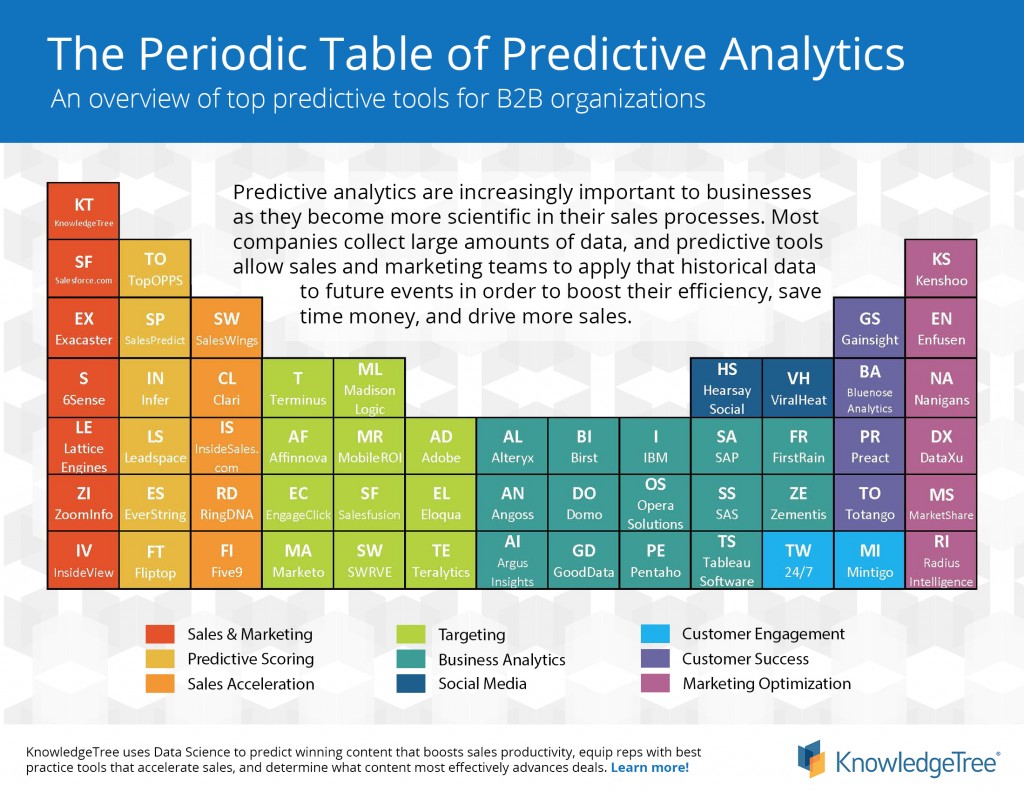The Complete Periodic Table of Predictive Analytics
To build a world-class sales organization, you need to be able to predict the future. And by tracking the right metrics, sales leaders can gain the fuel they need to make smarter decisions and help their sales teams drive more revenue than ever. So if your sales team is not already leveraging predictive analytics, you may be missing out on some vital opportunities for growth.
What are Predictive Analytics?
If you haven’t yet heard the term “predictive analytics,” brace yourself, because you’re going to be hearing those two words a lot over the next several years. Predictive analytics can give sales and marketing leaders the power to make smarter decisions. They also give insight into which activities must occur in order to reach a desired outcome.
We’ve put a lot of work into providing our customers with some of the most comprehensive conversation analytics in the industry. Our customers are using our analytics to make smarter revenue predictions. They’re also leveraging our analytics package to gain insight into how many dials each rep needs to make in order to book meetings, create opportunities and drive revenue. The result is that sales leaders can intervene early and often when reps need additional guidance in order to hit their goals. This is crucial, because there is no longer time to just sit back, relax and wait to see which reps do or don’t hit their numbers.
The Periodic Table of Predictive Analytics
Our customers have been loving our analytics. And we’re pleased to announce that our predictive analytics package has been recognized by KnowledgeTree in their recent infographic: The Periodic Table of Predictive Analytics.

What I like about this infographic is that it shows that there are several important categories of predictive analytics including sales acceleration, marketing optimization, social media, lead targeting and more. While it can be important to make predictions in many facets of your business, if you’re interested in learning more about sales analytics in particular, you should check out our recent Complete Guide to Inside Sales Analytics. It goes over more than 50 of the most important metrics that sales teams should be tracking in order to predict and influence revenue.
